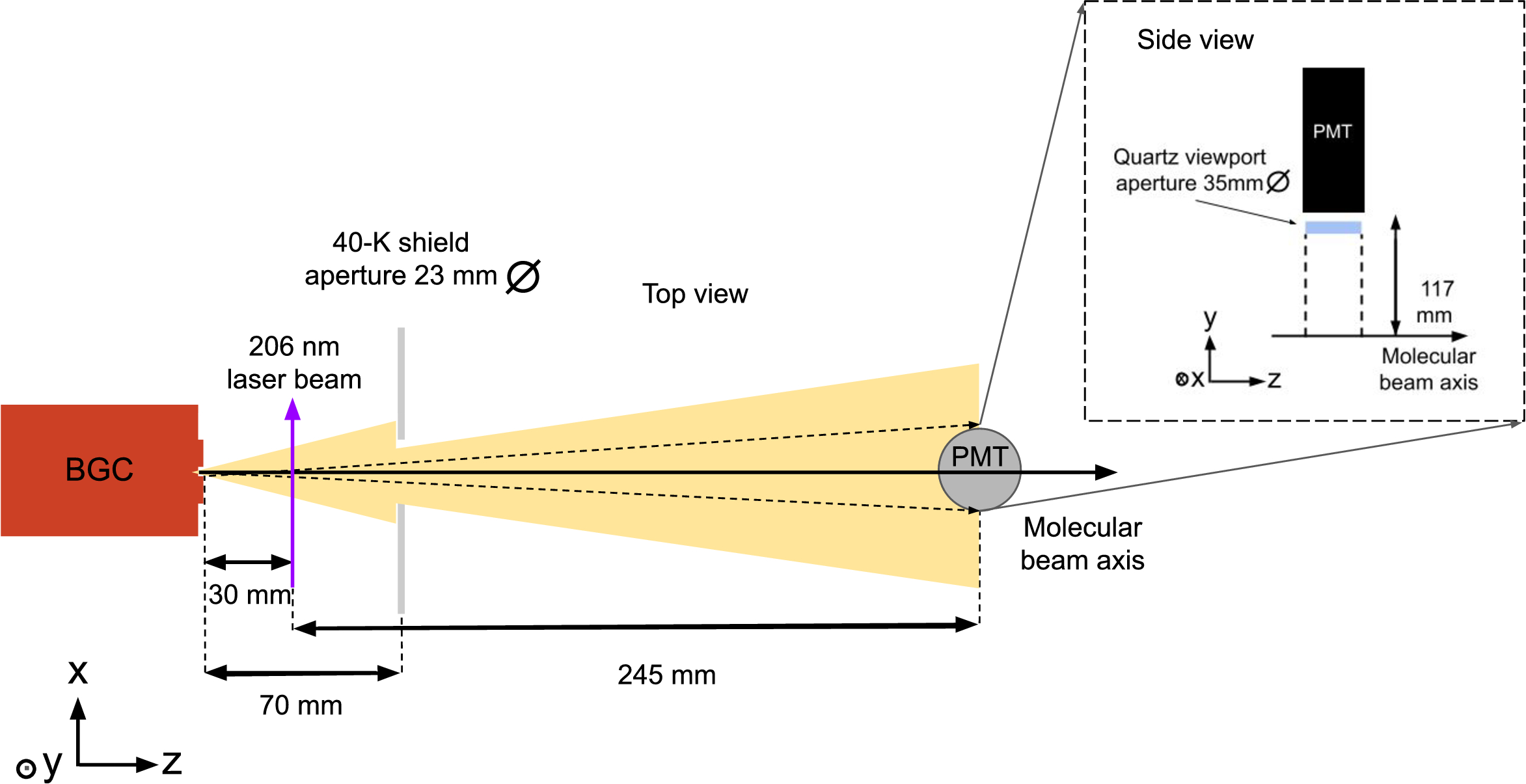Selected results
Characterization of the buffer gas source

We characterized a continuous buffer gas cooled source using CO molecules. Our beam contains 2.5 × 1014 molecules/(s sr) at about 160 m/s.
Measuring molecular frequencies in the 1--10 um range at 11-digits accuracy
We use the Italian fibre link network to transfer the microwave primary frequency standard from the Italian Metrological in Torino to the mid IR in our lab in Florence. We provide a generally applicable method for absolutely referencing mid IR light and we apply it to the measurement of a vibrational transition in a highly metastable state in a molecular beam experiment. [34]
Reviews
In a first article, the technology behind molecule chip is reviewed and a short history of its development is sketched. [30] In another article, we review the recent results in high-resolution spectroscopy on cold molecules. Laser spectroscopy of cold molecules addresses issues of symmetry violation, like in the search for the electric dipole moment of the electron and the studies on energy differences in enantiomers of chiral species; tries to improve the precision to which fundamental physical constants are known and tests for their possible variation in time and space; tests quantum electrodynamics, and searches for a fifth force. Further, we briefly review the recent technological progresses in the fields of cold molecules and mid-infrared lasers, which are the tools that mainly set the limits for the resolution that is currently attainable in the measurements.[32]
Characterization of OP-GaP crystal
We provide the first characterization of the linear, thermo-optic, and nonlinear properties of OP-GaP in a DFG configuration. Moreover, by comparing the experimental efficiency to Gaussian beam DFG theory, we derive an effective nonlinear coefficient d=17(3) pm/V for first-order quasi-phase-matched OP-GaP. The temperature and signal wavelength tuning curves are in qualitative agreement with theoretical modeling.[33]





